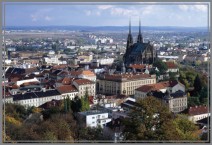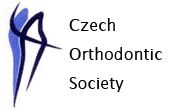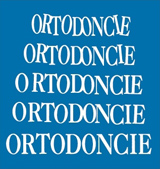| Invitation | |
| Main Information | |
| Congress Venue | |
| Congress Course | |
| Keynote lectures | |
| Registration | |
| Visa requirements | |
| Accommodation | |
| Documents | |
| Contacts | |
|
|
|
About Brno
|
|
|
|
|
 The Congress is organised by the Czech Orthodontic Society |
|
THE CITY OF BRNO
The city of Brno is situated in the heart of Europe. It is the second largest city in the Czech Republic with nearly 400 000 inhabitants and is the capital of the South Moravian Region. Brno is the crossroads of main European highways. The city has an airport with international status and is considered as an important railway junction.
The history of Brno goes back to the 9th century. Basic municipal rights and privileges were granted to the city by the Czech king Wenceslas I in 1243. After the successful defense of the city against the Swedes in the Thirty Years War, Brno became the capital of Moravia. The craft production and trade successfully developed. Many churches were built beginning from the Cistercian monastery in Old Brno through St. Peter’s temple up to the St. James church. Since the beginning of the 19th century Brno became one of the largest textile and then the engineering industry centers. In 1928 the kernel of the Brno Exhibition was created in occasion of the Exhibition of the contemporary culture and Brno becomes a place frequented by commercially successful trade fairs and exhibitions taking place in the Brno Exhibition area - one of Europe’s most beautiful exhibition grounds.
Brno is a city with the largest number of universities. At present there are 14 universities with 34 faculties.
The St. Peter and Paul Cathedral is one of the main landmarks of the city. Originally a Romanesque church it was rebuilt in the 14th century in the Gothic style and is one of the most important religious monuments of the city. The St. James church located on Jakubské Square is considered as the most valuable religious monument in the terms of arts. It was built in the 13th century, but retained its appearance of the 14th century, when it was rebuilt in the late Gothic style. Some prominent architects contributed on its conversion, namely Anton Pilgram at the beginning of the 16th century. Another eye-catching feature of the town is the Špilberk castle founded in the 13th century. The former original fort and the seat of the Moravian Margraves became the toughest prison in the Austrian monarchy. Now the castle is a museum of the city of Brno. Visitors can also see underground casemates with the rack and torture chambers and cells of the renowned prisoners - Baron Trenk, the robber Babinsky, etc. The Old Town Hall with a beautiful Gothic portal, made by the master Anton Pilgram is the oldest secular building in Brno. The Hall is known by numerous legends, the best known relates to the Brno dragon. The Green Grocery Market, founded in the 13th century occupies the central part of the historic core of the city. The peddlers‘ stands were concentrated around the Parnas fountain, which is the magnificent work of the Viennese architect Jan Bernard Fischer von Erlach. The Green Grocery market houses the Reduta theatre. The Reduta Theatre is considered as one of the oldest in the Central Europe. The corner house was reformed as the tavern in the early 17th century, where the street theatre companies performed. In 1731 – 1732 a new house next to the tavern was built and was used for social events and theatrical performances. In 1767, the first performance was staged in the Czech language and W.A. Mozart in his eleven years performed his concert here. During the 18th century, the building burned down several times. Than it was rebuilt to the marketplace. The theatrical performance returned in 1919. Presently the building is used by the National Theatre of Brno. The Ditrichsteinský palace founded by Francis from Ditrichstein, the Cardinal of Olomouc, is dominating the Green Grosser market. In 1805 the great Russian warrior Kutuzov stayed there.
The Villa Tugendhat is undoubtedly the most striking building of the modern architecture. The Villa was designated a World Heritage Site by UNESCO in 2001.The most important building belonging to the functionalist architecture is located in Černopolnístreet. One of Europe’s most famous architects Ludwig Mies van der Rohe began the construction of the Villa in 1929 by the order of the Tugendhats spouses.
It may seem that Brno is situated in the shadow of the capital city and is a bit neglected, but it certainly has something to offer. Brno’s theatres belong to the best scenes in the Czech Republic. Also, few people know that Brno had the first cinema in our country. Certainly we would find plenty of other advantages of the Moravian metropolis – like the proximity of nature, sunny vineyards and the wine cellars with excellent Moravian wine. The Brno people are enjoying their living and used to say: “At Brno we are proud and happy to live here.” We have no reason to distrust them and hope that during your congress you will also enjoy your staying in Brno!



